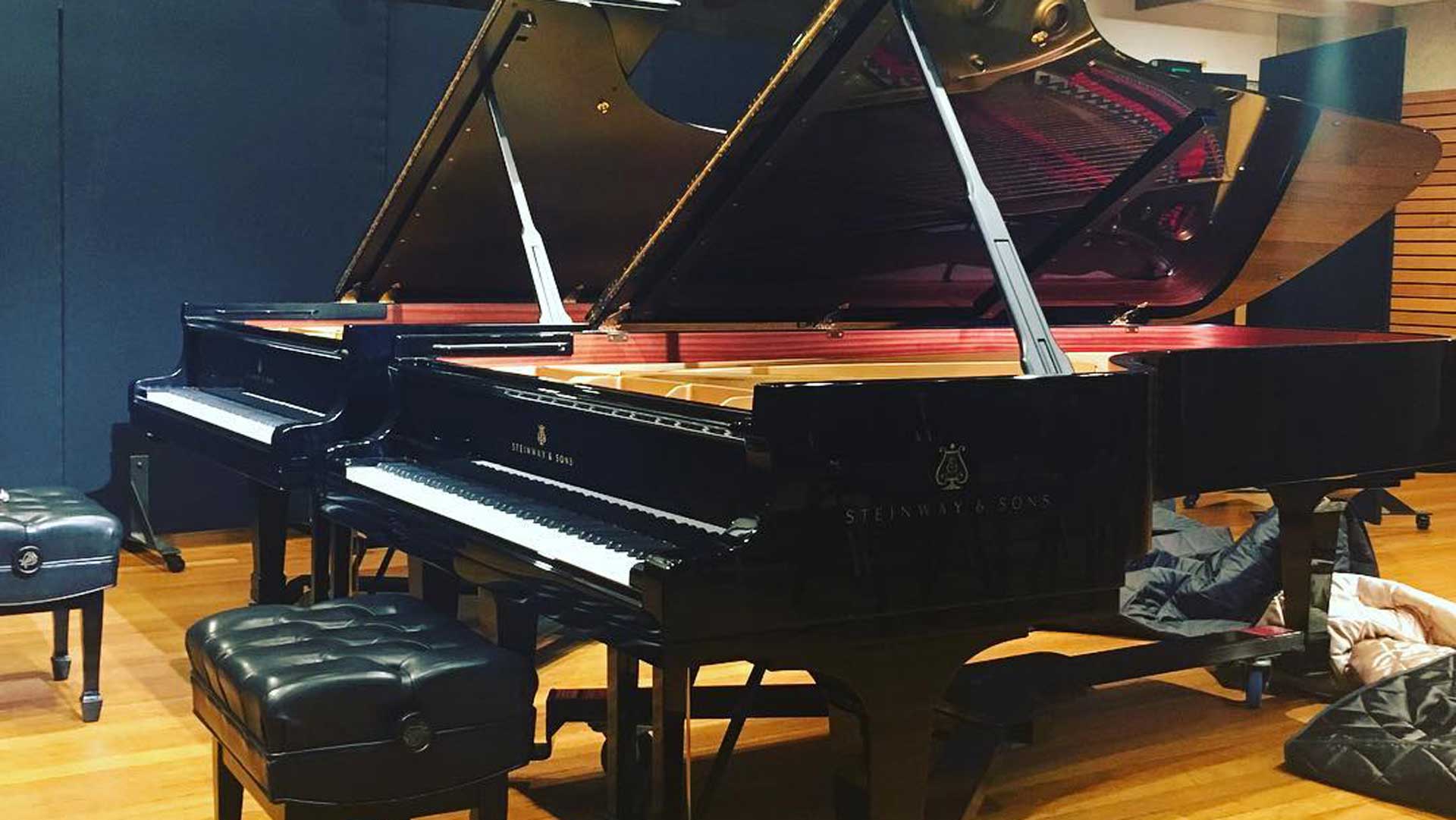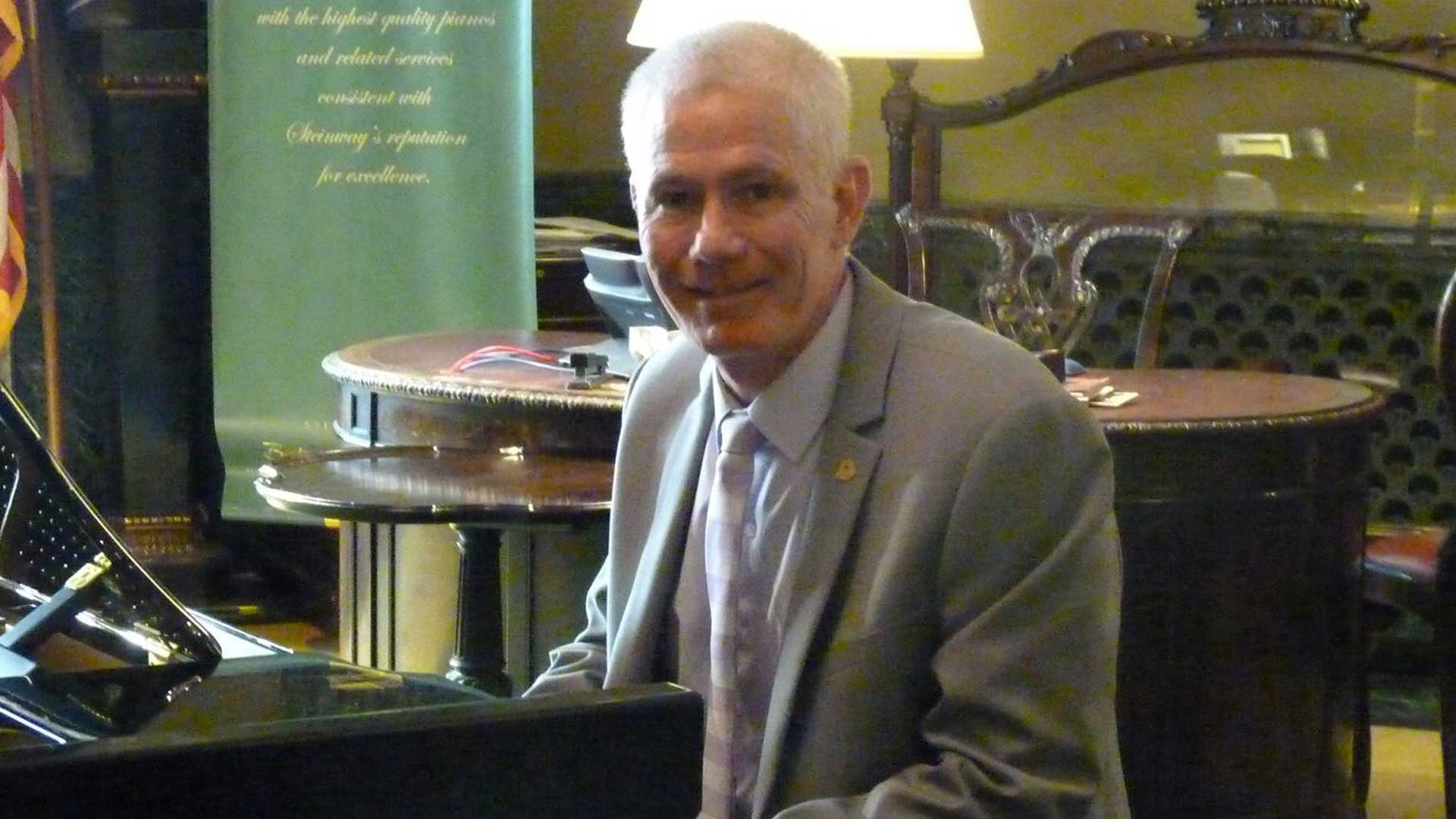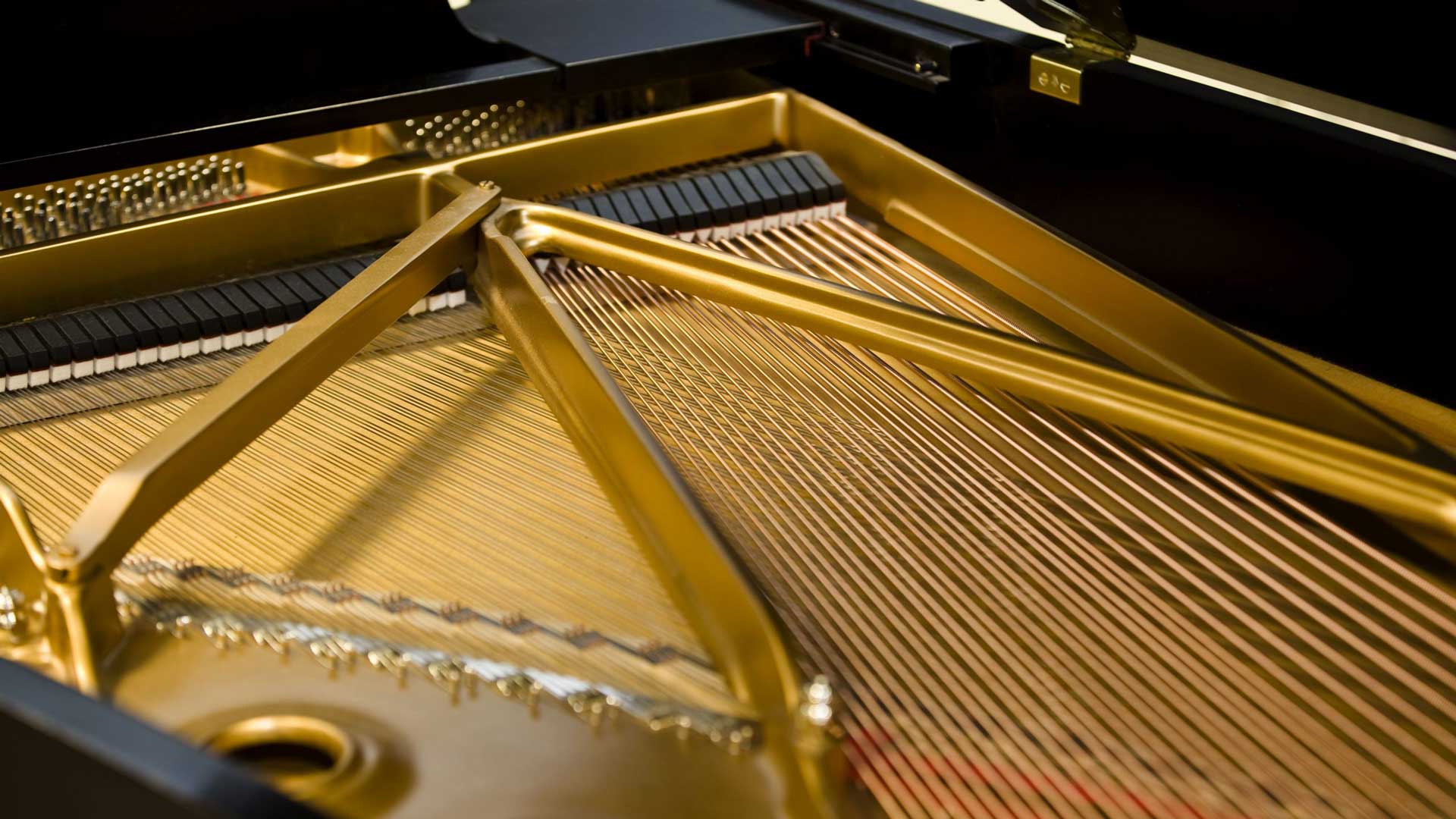“To study techniques used in the selection and maintenance of concert pianos from factory to stage – USA, Germany, UK”
I have been in the piano tuning industry since October 1984, and in that time I have always been fascinated by how pianists achieve their sound from what is really a percussive instrument. The piano key is pushed down and this in turn raises a hammer, which like a mallet, strikes the string and the string vibrates through the bridge and into the soundboard. The sound is influenced by how the pianist pushes the key (speed, weight, tension, relaxation etc) however the same piano will sound entirely different when played by another pianist.
Pianists are those unlucky musicians who do not tour the world with their own instrument, unlike the violinist who stores his instrument in the plane overhead locker, or the cellist who books another seat for her instrument; the pianist has to adapt to different instruments with differing personalities and instruments that are kept at differing standards.
Pianists all have subjective opinions regarding piano sound and also the feel of the piano action beneath their fingers. One pianist will like a piano with a deep touch, and the next one will say that the touch is too deep. The same goes with tonality. Some like it bright and powerful; others soft and sweet, and then there is the pianist who wants a little of both.
When a pianists arrives at a venue, considerable practice time is required to gain familiarity with the instrument and the venue’s acoustics. The pianist very often has a sound in their head of what they want to produce for the repertoire and for their audience; their signature sound – but how do they achieve this? Pianists specialising in music from the classical period generally want a fast action with what would be called a shallow key dip, but not generally a powerful instrument, whereas late 19th, 20th and 21st century works require a large sound, both requiring compromises in the piano set up and touch to suit each individual performance. The venue and accompaniment is also taken into consideration, for example, a softer sounding instrument will not fill a large auditorium nor support a full orchestra, however may be perfect in an intimate chamber music setting.
There are legendary stories about the pianos owned by Vladimir Horowitz and Glenn Gould, and how they were both uniquely set up in regulation (touch) and voicing (tonality) to suit their respective artiste. These instruments would not have suited to other pianists who required a deeper and heavier touch. Maestros Horowitz and Gould required these set ups to achieve their preferred touch and sound, which ultimately helped to achieve musicians who were comfortable to perform in public; knowing that the instrument was prepared to their requirements.
I have a recording of Krystian Zimerman playing the Brahms 1st Piano Concerto with the Berlin Philharmonic Orchestra which has become one of my favourite CDs, as the piano shines through as the hero of the orchestra and the passion of the work prevails through this magnificent instrument. I was taken back though, to read in the CD notes of this recording that a previous recording of the same concerto had been disregarded as the soloist had been unhappy with the original instrument that had been provided as it “was more suited for Mozart than Brahms”. Eventually Mr Zimerman found an instrument that was suited to his style, and produced a recording worthy of release.
This subject of selection of instruments to match the repertoire, musician requirements and the venue, plus the latest techniques in the maintenance of these instruments at a concert standard has led me here and being awarded a Churchill Fellowship to study this subject.
When we watch motor racing on television, we are often reminded of how much time and effort the engineers put in, modifying the set up of the car for each race, driver, track and environment. Does the same applies to pianos? Would more quality performances be achieved if concert pianos were set up for differently for each performance? Would the performers be more comfortable with the instrument if time and effort was put in to understand their individual nuances and requirements for the upcoming concerts? And ultimately, would the audiences level of enjoyment be higher if the performance quality was raised?
I have always been a person that is never satisfied with the status quo. The memory of past pianos, performances, venues and even the audience has an effect on the now in both the performer’s mind and myself as the “engineer”. The difference between a good performance and a great performance comes from a working team of the pianist, venue personnel, sound and lighting technicians, conductors, fellow musicians, venue acoustics and logistics, quality of instrument, and of course, the piano technician.



